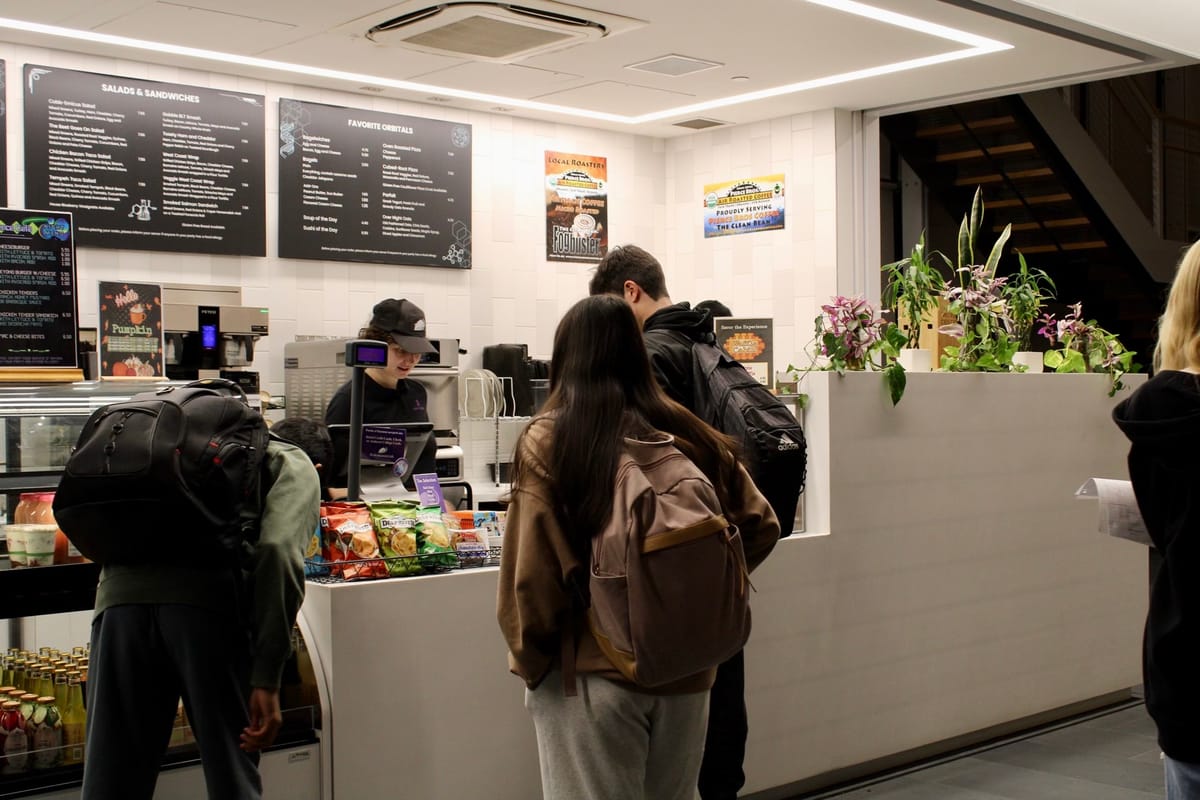Prices Increase in Cafes Across Campus
Following a 15 percent price increase in food options at the Frost Café and the Science Center Café due to rising inflation nationwide, students express frustration.

This fall, students have been surprised to find a late-night snack hitting their wallets harder than expected. The Frost Café and Science Center Café, the latter of which stays open until 10 p.m. on weeknights, have seen a 15 percent price increase in a variety of their food options, a fact that has many students grumbling.
The increased prices at the cafes this semester are largely due to higher rates of inflation nationwide, said Executive Director of Campus Operations Ralph Johnson. “The decision to change pricing is primarily based upon our need to be fiscally responsible,” he said.
The price increases this semester were the first since 2019. Dining Services paused its pricing review process during the pandemic due to the “financial and emotional stress” of the time period, Johnson said. The review is normally annual.
Johnson added that the price increase in a typical cafe item such as a sandwich, which went from $6.50 this year to $7.50, is actually a smaller price increase than nationwide food prices, which have increased 26 percent since 2019.
The decision to increase prices was settled on in early August, as part of a process led by former Executive Director of Dining Operations Joe Flueckiger, who left the college earlier this month. The need to maintain a balanced budget, a task complicated by rising food and labor costs, is ultimately what informed the decision, Johnson said.
Johnson emphasized that the increased cafe prices are not an attempt by the school to break even or pass along rising costs to students. Instead, the desire to accomplish a balanced budget made the price increases necessary. “It is important to note that all retail locations operate at a loss when including payroll costs,” he added.
Still, some students on campus have been irked by the new expense of their late-night snacks.
Ian Dopp ’24 found himself craving a snack while working at the Science Center one night recently. “And so I went and I got mac and cheese bites and to be honest, I’m kind of accustomed to them being a little bit cheap. And I was very taken aback that they were $7.”
Dopp purchased the mac and cheese bites anyway because he was hungry but said that he would reconsider his choices in the future.
“It was definitely a little annoying,” he said. “I have not gone back since to get food.”
“Don’t get me wrong, the Science Center definitely makes some high quality food,” he added. “But I don't think the high quality food warrants the increase in price from what I expected last year.”
This sentiment is shared by many students, according to Jeremy Marquez, a staff member at the Science Center cafe. “Most definitely people have stopped coming” since the prices increased, Marquez said.
Johnson acknowledged that the increased prices are a pain, but said that student feedback is important to the dining services team and invited students to fill out a survey that will be issued Dec. 1.
If student demand were to decrease significantly due to the higher prices, the school would “conduct another review and reprioritize our offerings,” Johnson said.
“No one ever likes a price increase [but] we’re here to help support students so that well-fed students can be well educated,” he added.
The next pricing review is scheduled to take place next summer and will be undertaken by the new director of dining services. However, if the dining services position is not filled at that point, Johnson said that he will be conducting the review.
Among the factors the review will take into consideration are inflation rates and budget allocations. Johnson said the ultimate goal of the review is to maintain a balanced budget and pass “the smallest amount possible, if any, onto the student.”
“We’re here to serve students,” he added. “We’re not here trying to take advantage of our number-one customers, although that might be the perception that some have.”





Comments ()